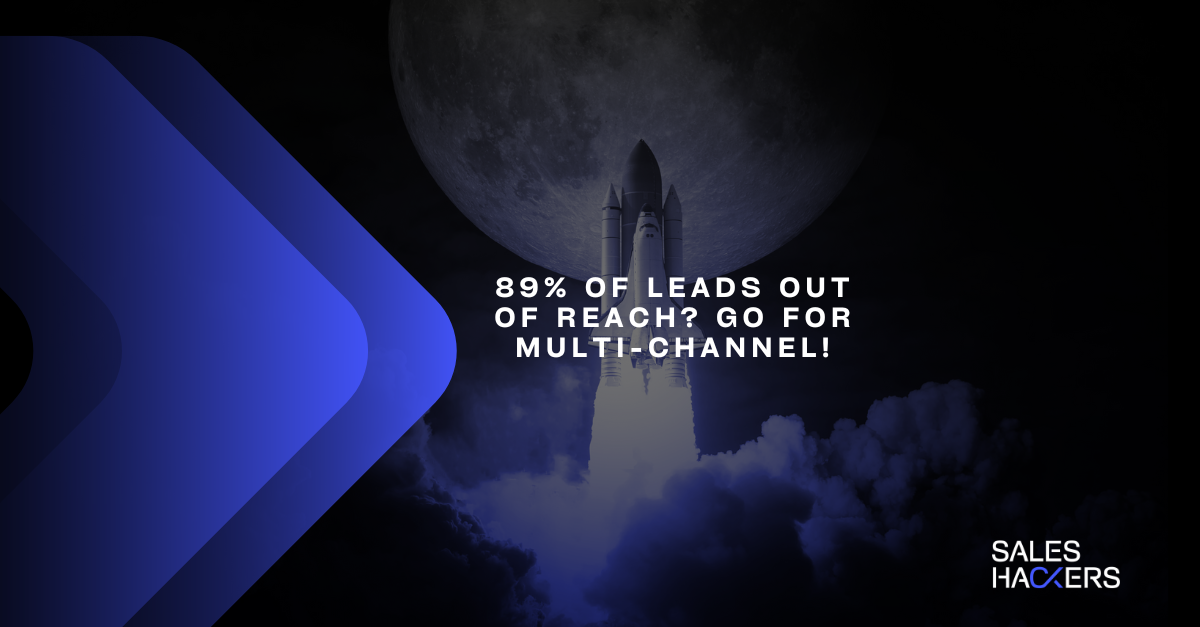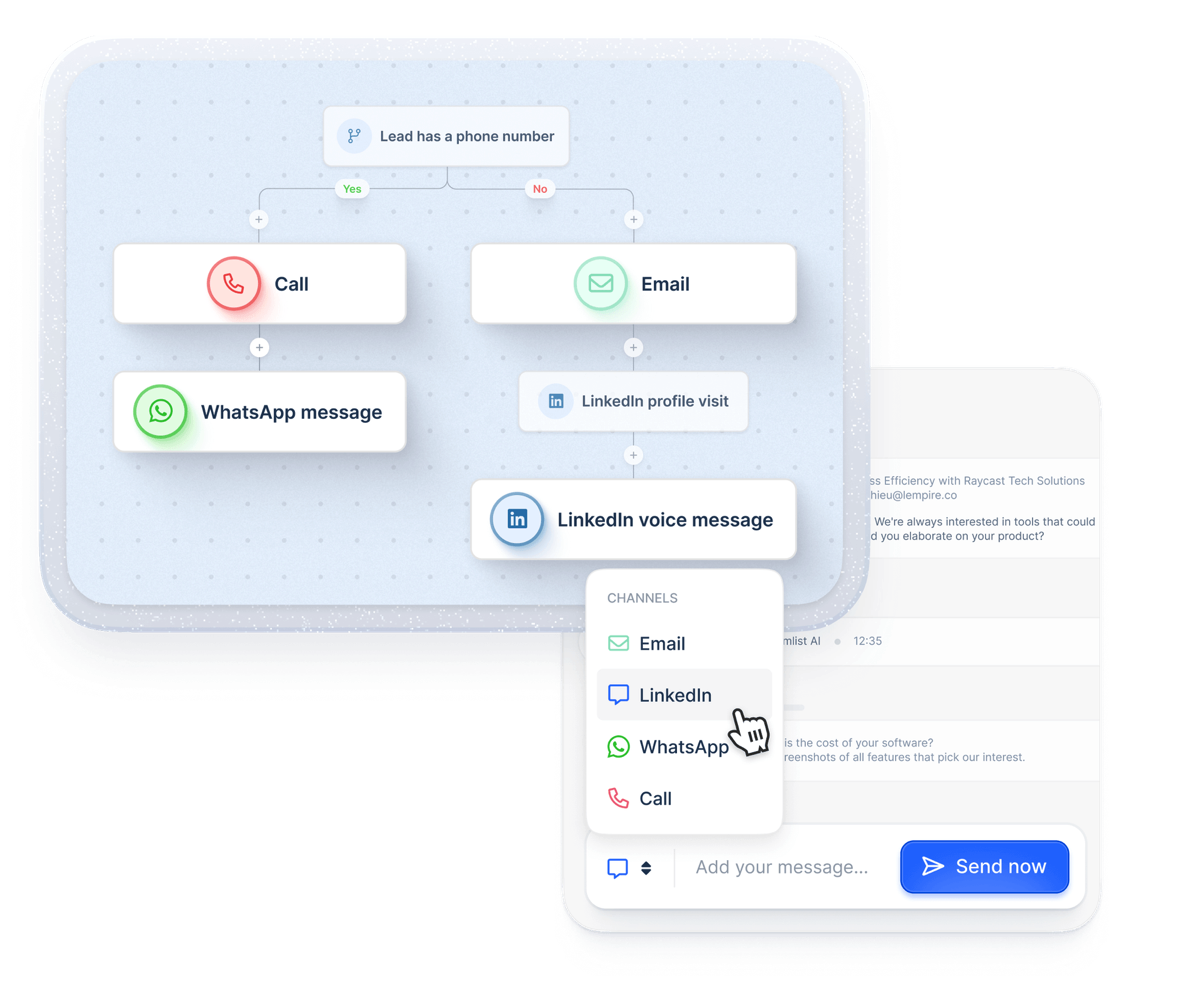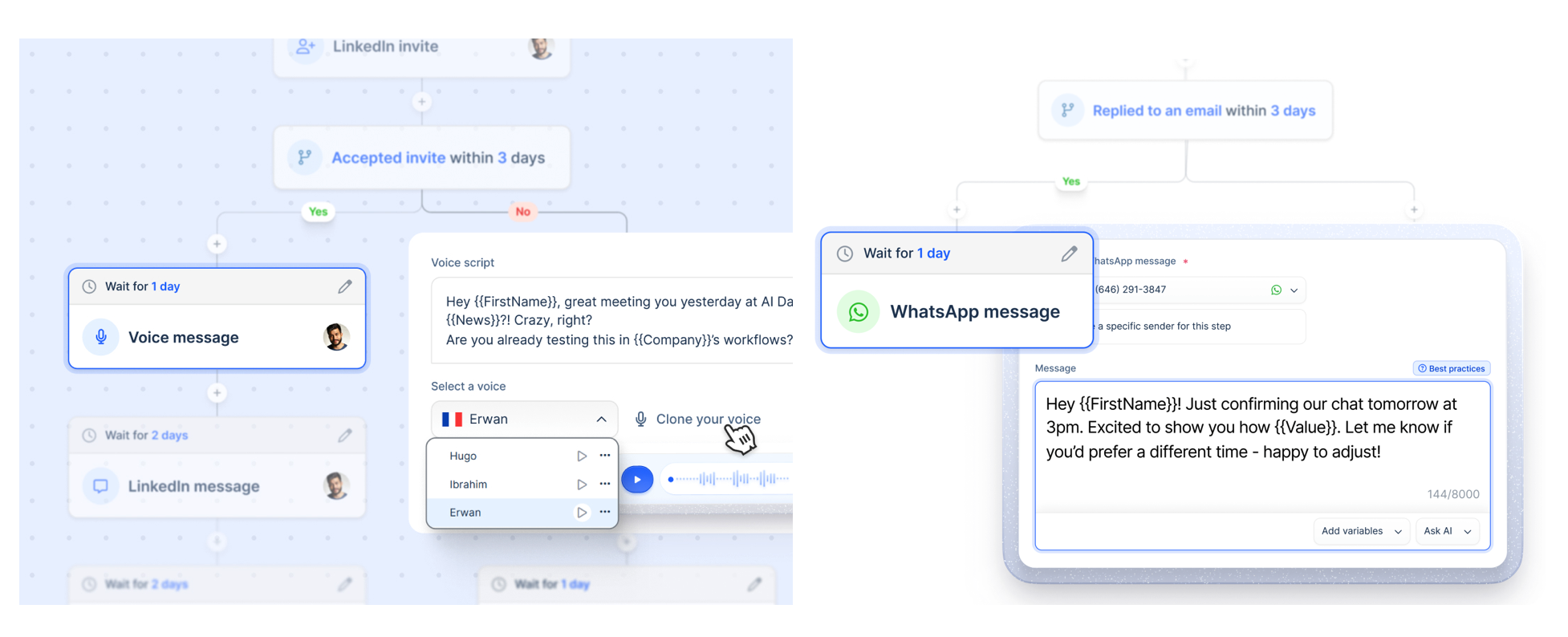89% of leads out of reach? Go multi-channel!
23.09.2025

Imagine sending 100 invitations on LinkedIn, and only 11 get accepted. That means 89% of your potential leads never make it to the next stage — messages, follow-ups, or conversations. That was the case in one of our campaigns. In others, acceptance rates ranged from 30–47%, but even then half or more of the prospects remained “out of reach.”
These numbers highlight how dangerous it is to rely on just one channel — even if it’s LinkedIn, a platform ideal for B2B networking and prospecting.

Statistics and research:
-
Lead acquisition cost – multi-channel campaigns have on average 31% lower CPL than single-channel campaigns (Sopro, State of Prospecting 2025).
-
Marketers’ perspective – as many as 86% of marketers say multi-channel is becoming increasingly effective and is key to better conversions (Salesgenie, Multichannel Marketing Stats 2025).
-
Average LinkedIn invitation acceptance rate – in well-run campaigns, it hovers around 29–30% (Expandi, State of LinkedIn Outreach 2025). This means that even under good conditions, more than 70% of prospects remain out of reach.
-
Conversion in multi-channel campaigns – campaigns run across 3 or more channels generate up to 287% higher purchase conversion compared to single-channel campaigns (GetVero, Why Multi-channel is a Must-do).
-
Customer spending – people who engage with a brand across multiple channels spend 3–4 times more than those who interact through just one (SAS, Multichannel Marketing Insights).
Cold emailing and legal concerns
Many clients we talk to reject cold emailing due to fear of legal consequences. Most often, they cite GDPR and the belief that the regulations completely ban sending emails to new contacts. That’s a myth.
GDPR was not created to eliminate prospecting altogether but to set clear rules for data processing and protect recipients’ privacy. There are several legal grounds that still allow companies to use cold emailing — provided it’s done responsibly:
-
sending messages relevant to someone’s professional role,
-
clearly stating who you are and why you’re reaching out,
-
making it easy to unsubscribe.
In other words: cold emailing, when done according to best practices, does not break the law — it simply operates within the framework set by regulations.
We’ve covered this topic in detail in one of our previous articles, but it’s worth stressing here: rejecting cold emailing because of GDPR is a strategic mistake that further limits the number of channels you can use to reach potential clients.
Why single-channel isn’t enough
-
LinkedIn is a great starting point, but the stats don’t lie. Even in well-run campaigns, the average acceptance rate is around 29–30% (Expandi, State of LinkedIn Outreach 2025). This means most prospects remain beyond your reach, often without a chance for a follow-up.
-
The issue isn’t LinkedIn itself but the “single-channel monoculture.” Algorithms limit organic reach, inboxes are crowded, and many decision-makers don’t use the platform regularly. On top of that, any change in policy or interface can suddenly decrease effectiveness.
-
Relying on a single channel is like putting all your savings into one stock. If the value drops, you lose everything. Diversifying channels in prospecting works like building an investment portfolio — it reduces risk and increases chances of return. Even if one channel underperforms, others carry the weight and keep your sales pipeline stable.
Which channels work best in B2B?

Today, B2B outreach goes far beyond just LinkedIn or email. Channels once reserved mainly for private communication are increasingly being tested. The key is finding the right mix for your industry and target audience.
Most commonly used and proven in practice:
-
LinkedIn (connection requests) – still a core channel in B2B prospecting.
-
Cold emailing – effective, scalable, and — despite fears — still legal when done right.
-
InMail – a good alternative when a connection request is not accepted.
-
Invites to follow a company page or attend events – great for building long-term contact.
-
Sponsored ads and retargeting – maintain visibility among those who haven’t responded yet.
-
Content marketing (blogs, case studies, social media) – supports sales by building expertise and trust.
-
Phone calls – less popular but still effective in some sectors (e.g., industry, manufacturing).
-
Comments on prospects’ posts/articles – a subtle but highly effective way to start interaction. Instead of sending a message right away, you can leave a thoughtful comment under a decision-maker’s post or article. This boosts your visibility and provides a natural pretext for further contact.
Emerging formats increasingly used in B2B:
-
Voice messages – quick, more personal alternative to text.
-
Video messages – short, personalized videos that stand out in the inbox.
-
WhatsApp messages – popular in regions where messengers dominate over email (e.g., Middle East, Latin America).
-
SMS – often underrated in B2B but effective in situations requiring a fast response (e.g., reminders about offers, meetings, or events).

👉 The key is not to treat all channels as mandatory. Instead, test and combine 2–4 that bring the best results in your industry.

